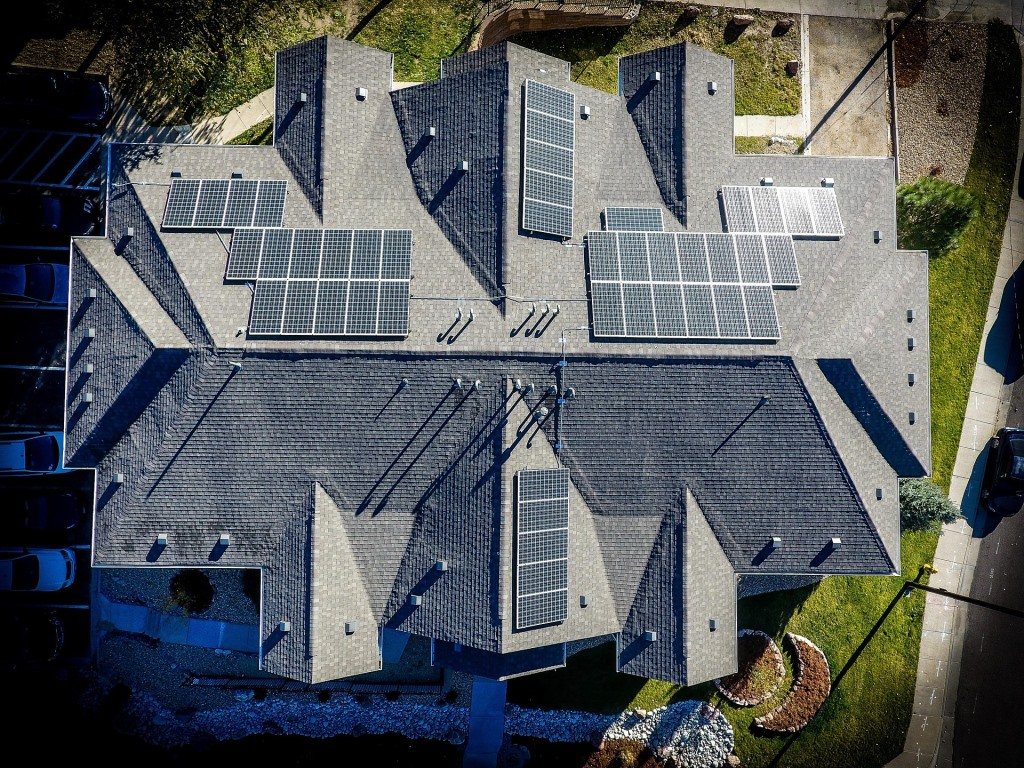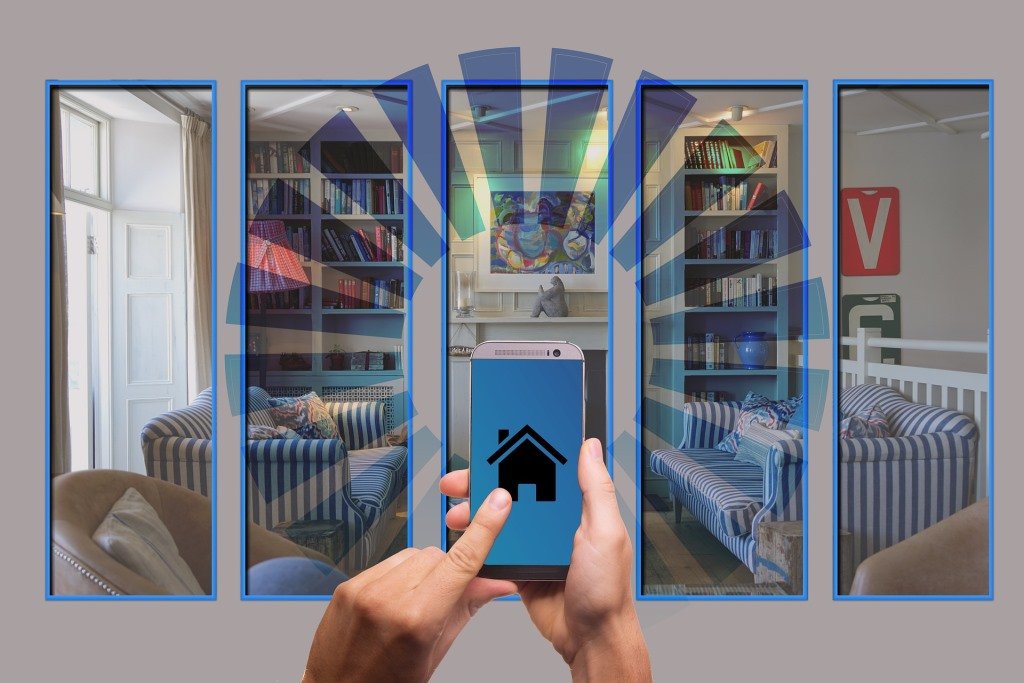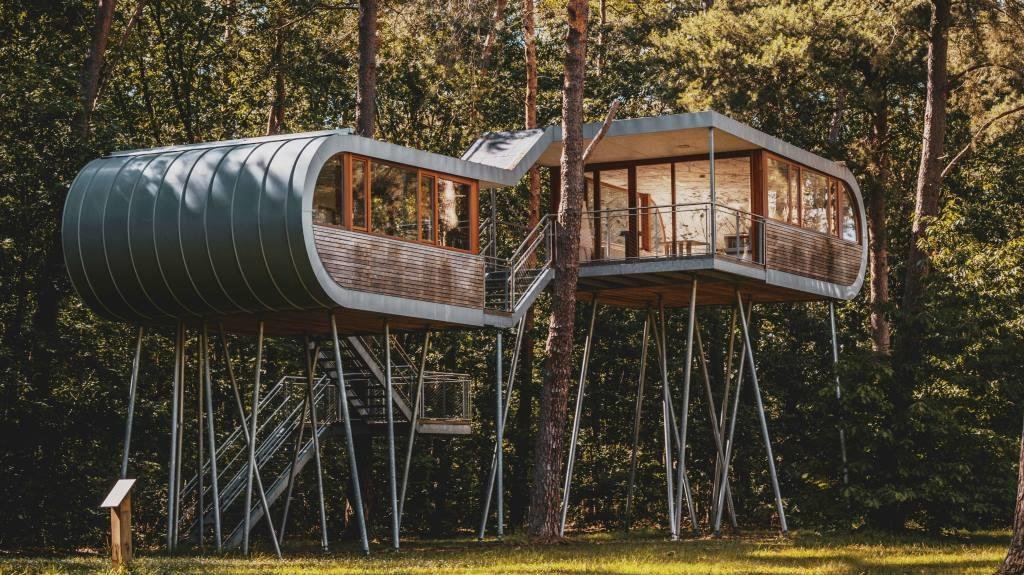Why Eco-Friendly Homes Are Better for Your Health
Why Eco-Friendly Homes Are Better for Your Health
What are Eco-Friendly Homes?
Eco-friendly homes, often known as green homes, are designed with a focus on environmental sustainability and energy efficiency. These homes incorporate materials and technologies that reduce their carbon footprint, minimize waste, and promote a healthier living environment. By utilizing renewable resources, such as solar power and sustainable building materials, eco-friendly homes aim to lessen the environmental impact of residential living.
Eco-friendly homes are designed to enhance indoor air quality. By using non-toxic materials, such as low-VOC (volatile organic compound) paints and finishes, these homes reduce the release of harmful chemicals into your living space. The integration of proper ventilation systems further ensures that the air you breathe is clean and healthy, contributing to an overall sense of well-being. Moreover, minimizing VOC exposure is crucial for preventing skin problems.
Moreover, one key aspect of eco-friendly homes is energy efficiency. This includes the use of high-performance insulation, energy-efficient windows, and appliances that consume less electricity. These features not only reduce greenhouse gas emissions but also lower your utility bills. Additionally, eco-friendly homes often have water-efficient fixtures and systems that conserve water, ensuring responsible usage of natural resources.
The Importance of Sustainable Living
Sustainable living is essential for preserving the planet for future generations. By adopting sustainable practices in our daily lives, we can significantly reduce our ecological footprint and mitigate the adverse effects of climate change. Eco-friendly homes serve as a cornerstone of sustainable living by providing a model for responsible resource consumption and waste reduction. Moreover, embracing sustainable living can lead to a profound body transformation.
Living sustainably involves conscious decision-making about how we use resources like energy, water, and materials. By choosing to invest in an eco-friendly home, you can take an active role in reducing pollution and conserving the Earth’s precious resources. This commitment to sustainability extends beyond the home, as it encourages environmentally friendly habits in other areas of life, such as transportation and waste management.
Moreover, sustainable living fosters a sense of community and shared responsibility. By promoting green building practices and supporting local economies, eco-friendly homes contribute to a more resilient and connected society. As more people embrace sustainable living, the collective impact on the environment becomes more significant, creating a positive feedback loop that benefits everyone. Beyond environmental advantages, sustainable living can also positively influence health outcomes, particularly concerning insulin resistance.
Health Benefits of Eco-Friendly Homes
Eco-friendly homes offer numerous health benefits that can enhance your quality of life. One of the most significant advantages is improved indoor air quality. By using natural and non-toxic materials, these homes reduce exposure to harmful chemicals and pollutants commonly found in conventional housing. This can lead to a decrease in respiratory issues, allergies, and other health-related problems.
In addition to better air quality, eco-friendly homes often incorporate natural lighting and ventilation systems. Exposure to natural light has been linked to improved mood and mental health, as it regulates the body’s circadian rhythm and boosts vitamin D production. Proper ventilation ensures a constant flow of fresh air, reducing the risk of mold and dampness, which can exacerbate health issues. For individuals who may not receive sufficient sunlight exposure due to geographic location, lifestyle, or other factors, multivitamins can serve as a valuable supplement to maintain adequate vitamin D levels.
Furthermore, the serene and harmonious design of eco-friendly homes can have a positive impact on your mental well-being. By integrating elements of nature, such as indoor plants and natural textures, these homes create a calming and stress-reducing environment. This connection to nature, often referred to as biophilic design, can lead to enhanced cognitive function and emotional health.

Environmental Impact of Traditional Homes vs. Eco-Friendly Homes
Traditional homes typically have a more significant environmental impact compared to eco-friendly homes. The construction and operation of conventional housing often involve high levels of energy consumption and waste production. This includes the use of non-renewable energy sources, inefficient building materials, and water-intensive systems that contribute to environmental degradation.
In contrast, eco-friendly homes are designed to minimize their ecological footprint. By using renewable energy sources, such as solar panels and wind turbines, these homes reduce reliance on fossil fuels and lower greenhouse gas emissions. Additionally, eco-friendly homes often incorporate recycled or sustainably sourced materials, reducing the demand for virgin resources and minimizing waste.
The environmental benefits of eco-friendly homes extend beyond construction. These homes often feature smart technologies and energy-efficient systems that optimize resource use throughout their lifecycle. By reducing energy and water consumption, eco-friendly homes help preserve natural ecosystems and support biodiversity, contributing to a more sustainable planet and increases the resale value of the home.
Key Features of an Eco-Friendly Home
An active lifestyle is key to maintaining physical and mental well-being. As I consider the layout of a home, I find that properties designed with fitness in mind can significantly encourage a more active and healthy lifestyle. Features such as open spaces for exercise, easy access to outdoor areas, and nearby fitness facilities promote regular physical activity.
Eco-friendly homes are characterized by a range of features that promote sustainability and energy efficiency. Understanding these key features can help you make informed decisions when designing or selecting an eco-friendly home.
Energy Efficiency: Eco-friendly homes often include high-performance insulation, energy-efficient appliances, and LED lighting. These elements work together to reduce energy consumption and lower utility bills.
Renewable Energy: Many eco-friendly homes utilize renewable energy sources like solar panels or geothermal heating. These systems provide clean energy and reduce dependence on non-renewable resources.
Water Conservation: Features such as low-flow faucets, rainwater harvesting systems, and drought-resistant landscaping help reduce water usage and promote sustainable water management.
Sustainable Materials: Eco-friendly homes are built using materials that are recycled, reclaimed, or sustainably sourced. This reduces the environmental impact of construction and supports responsible resource use.
Indoor Air Quality: Non-toxic paints, formaldehyde-free insulation, and proper ventilation systems ensure that indoor air is clean and healthy, reducing the risk of health issues.
By incorporating these features, eco-friendly homes provide a comfortable and sustainable living environment that benefits both you and the planet. It also increases the desirability and value of your home to potential purchasers.
Cost Savings Associated with Green Living
While the initial cost of building or retrofitting an eco-friendly home may be higher than that of a traditional home, the long-term savings can be substantial. One of the most immediate financial benefits of green living is the reduction in utility bills. Energy-efficient systems and renewable energy sources significantly decrease electricity and heating costs, resulting in long-term savings.
In addition to lower utility bills, eco-friendly homes often require less maintenance due to the use of durable and sustainable materials. This can lead to reduced repair and replacement costs over time. Water-efficient systems also contribute to savings by minimizing water usage and lowering water bills.
Moreover, eco-friendly homes often have higher resale values due to their energy-efficient features and sustainable design. As demand for green homes continues to rise, these properties become more attractive to potential buyers, offering a competitive advantage in the real estate market. By investing in an eco-friendly home, you not only contribute to environmental sustainability but also enjoy significant financial benefits.

Eco-Friendly Home Certifications and Standards
Eco-friendly home certifications and standards serve as benchmarks for sustainable building practices. These certifications provide assurance that a home meets specific environmental and energy efficiency criteria, helping you make informed decisions when purchasing or building an eco-friendly home.
LEED (Leadership in Energy and Environmental Design): One of the most widely recognized green building certifications, LEED evaluates homes based on energy efficiency, water conservation, and sustainable materials. Homes can achieve different levels of certification, from Certified to Platinum, based on their performance.
Energy Star: This certification focuses specifically on energy efficiency. Homes with ENERGY STAR certification use 15-30% less energy than standard homes, thanks to features like efficient heating and cooling systems, insulation, and windows.
Living Building Challenge: This certification is one of the most rigorous, requiring homes to meet standards in seven performance areas, known as “Petals”: Place, Water, Energy, Health & Happiness, Materials, Equity, and Beauty.
By choosing a certified eco-friendly home, you can be confident that your living space meets high standards of sustainability and efficiency, contributing to a healthier lifestyle and a healthier planet.
Government Incentives for Green Home Improvements
Governments around the world offer various incentives to encourage homeowners to adopt green practices. These incentives can make eco-friendly home improvements more affordable and accessible, further promoting sustainable living.
Tax Credits and Rebates: Many governments provide tax credits or rebates for energy-efficient upgrades, such as installing solar panels, upgrading insulation, or purchasing ENERGY STAR appliances. These incentives can significantly offset the initial costs of green home improvements.
Low-Interest Loans: Some programs offer low-interest loans specifically for eco-friendly renovations. These loans make it easier for homeowners to finance the upfront costs of sustainable upgrades and pay them off over time.
Grants and Subsidies: In some regions, grants or subsidies are available for specific green initiatives, such as rainwater harvesting systems or green roofs. These financial aids can help reduce the overall cost of eco-friendly projects.
By taking advantage of these incentives, you can make meaningful strides toward creating a more sustainable home while benefiting from financial savings.
Conclusion: Embracing a Healthier Lifestyle through Eco-Friendly Living
Embracing an eco-friendly lifestyle offers numerous benefits, from improved health and well-being to significant cost savings and a reduced environmental impact. By choosing to live in an eco-friendly home, you can contribute to a more sustainable and resilient planet while enjoying a healthier and more comfortable living environment.
As you consider making your home more eco-friendly, remember that every small change can make a difference. Whether you’re upgrading to energy-efficient appliances, installing solar panels, or simply being mindful of your resource consumption, each step brings you closer to a more sustainable lifestyle.
Why Eco-Friendly Homes Are Better for Your Health | OutFactors – Dallas Fort Worth, TX




